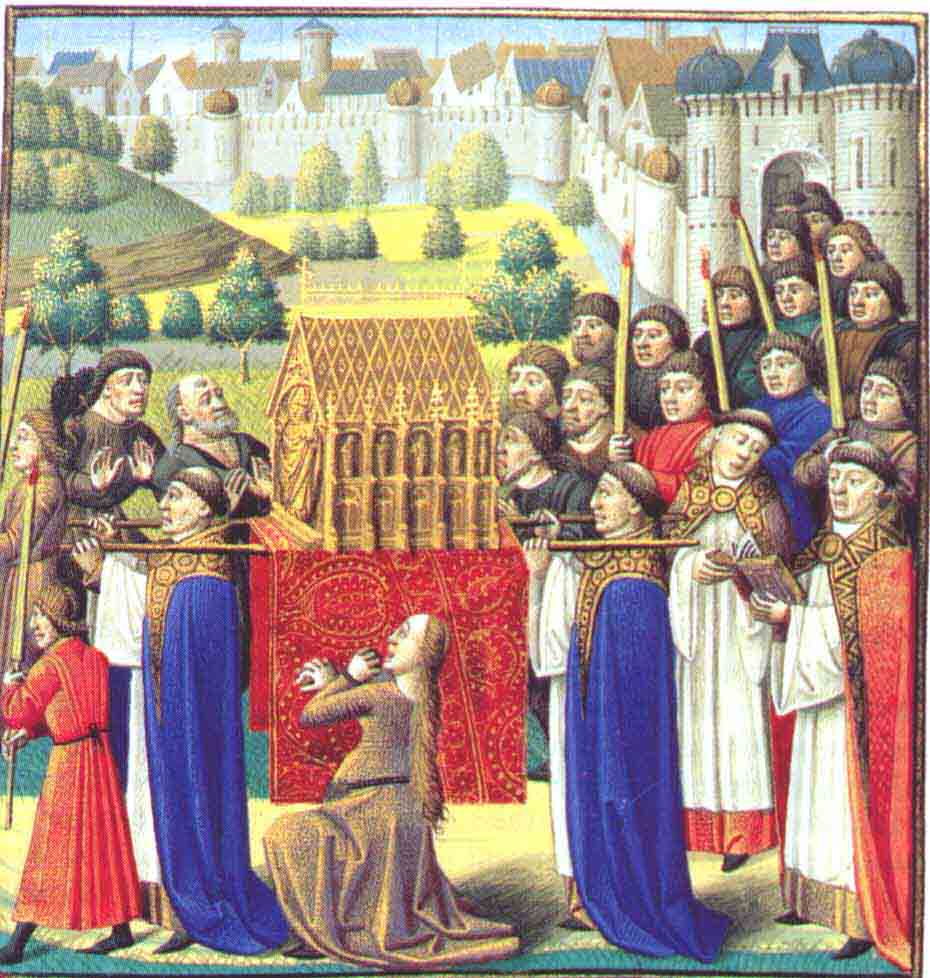
Course Description

Course Description

|
Medieval
Drama and Theatre Studies is an Internet Assisted course designed to connect
dramatic texts with theatre history from 900 to 1500: a period which represents
a cycle starting from itinerate players on the fringes of respectable society;
to devotional dramas inside cathedrals, monasteries, nunneries and great
halls; to popular, guild-sponsored biblical cycle plays in town squares
and ditches outside the city walls; and finally, out of favor again as
much a result of religious and civic censorship as the appearance of Vitruvius
books on architecture in 1486, which challenged the medieval representation
of time as a cycle. The course will contextualize medieval drama
and theatre on the basis of several motives: to establish religious orthodoxy;
to expand new-found leisure time into recreation; and to use resources
to finance public events. Specific readings and historical materials will
aim at submerging students in medieval life and thought as reflected in
medieval performances. To this end, selected cycle plays will be read for
their distinctive features, that is, how they differ from one another as
well as from their biblical origins. Additionally, attention will be given
to the ingenuity of medieval staging devices, financial records, public
literacy and social codes; lives of performers; and common practices during
theatre performances.
Coursework
and student-teacher communications will be computer-assisted. Selected
relevant critical texts include: (1) Medieval Drama by David Bevington,
; (2) The Medieval Stage by E. K.Chambers; (3) A New History of Early English
Drama, edited by John D. Cox and David Scott Kastan; (4)Theatre in the
Middle Ages by William Tydeman; and (5)The Medieval Theatre by Glynne WickhamOwing to Internet Assistance, the flavor and color of medieval life will be facilitated by links to recordings of music from the middle ages; visual resources representing medieval art and architecture; library holdings of prestigious medieval academies; and both ancient and modern examples of medieval theatre performances. Students will have special access to video recordings of the FJU 2000 Medieval Festival and Forum which feature five medieval plays and scholarly paper presentations. |
|
|
|
John
C. Coldewey, ed. Early English Drama (An Anthology), New York and London:
Garland Publishing, Inc., 1993.
|
| Tony Harrison. The Mysteries, London and Boston: faber and faber, 1985. |
|
Everyman,
Wisdom, Mankind, The Digby Mary Magalene, and three cycles from The Mysteries
-- The Nativity, The Passion and Doomsday
|
| Selected
dramatic texts from The Brome and Chester Cycles Abraham and Isaac, The
Digby Killing of the Children
Internet text from one of the York Cycle of Mystery Plays ( to be chosen by the student) |
Selected Historical Readings :
| The course
will examine the following plays in depth: Everyman, Wisdom, Mankind, the
Digby Mary Magdalene and the three cycles of Mystery Plays (The Nativity,
The Passion and Doomsday) arranged by Tony Harrison.
Reference Materials : Carole Armstrong. Lives and Legends of the Saints. London : Francis Lincolm, 1995. Sylnan Barnet, Morton Berman and William Burto, Eds. The Genius of the Eartly English Theatre. New York : A Mentor Book, 1962. David Bevington, Medireview Drama. Boston : Houghton Mifflin Company, 1975. Oscar Brockett. History of the Theatre. Boston : Allyn Bacon, 1995. (7th Edition) Gail McMurray Gibson. The Theatre of Devotion (East Anglian Drama and Society in the Late Middle Ages. Chicago : The University of Chicago Press, 1989. Peter Happe. Ed. English Mystery Plays. Middlesex, England : Penquin Books, 1985. S. M.Houghton. Sketches from Church History. Edinburgh : The Banner of Truth Trust, 1980. Milton D. Hunnex : Chronological and Thematic Charts of Philosophies and Philosophers. Grand Rapids, Michigan : Zondervan Publishing House, 1986. Simon Trussler. The Cambridge Illustrated History of British Theatre. Cambridge : Cambridge University Press, 1994. List of readings : 1.Roman
Britain and the Early Middle Ages 2.The High Middle Ages 3.The Early Church
to the Rise of Islam 4.Religion and Philosophy Charts 5.The Church 6.The
Parish 7.The New Theatre 8.School and Scholars ; Books and Authors 9.Small
Business 10.Explanatory Notes Section III 11.Maps of Europe in Early and
Late Middle Ages 12.reconstruction of mansion in medireview church
|
¡@Course requirements
| 10%Class participation |
| 35%Three short (1 - 2 pages) essays and five identification quizzes |
| 15%One longer essay (5 - 7 pages) |
| 20%Midterm exam (to include both short essay and objective questions |
| 20%Final exam (to include both short essay and objective questions) |
| *Proposed essay topics and questions will be given to students in advance; other topics may be substituted by special permission. The contents of papers will be evaluated on the basis of originality, understanding, use of research methods and language accuracy. Obviously, plagiarism is unacceptable |